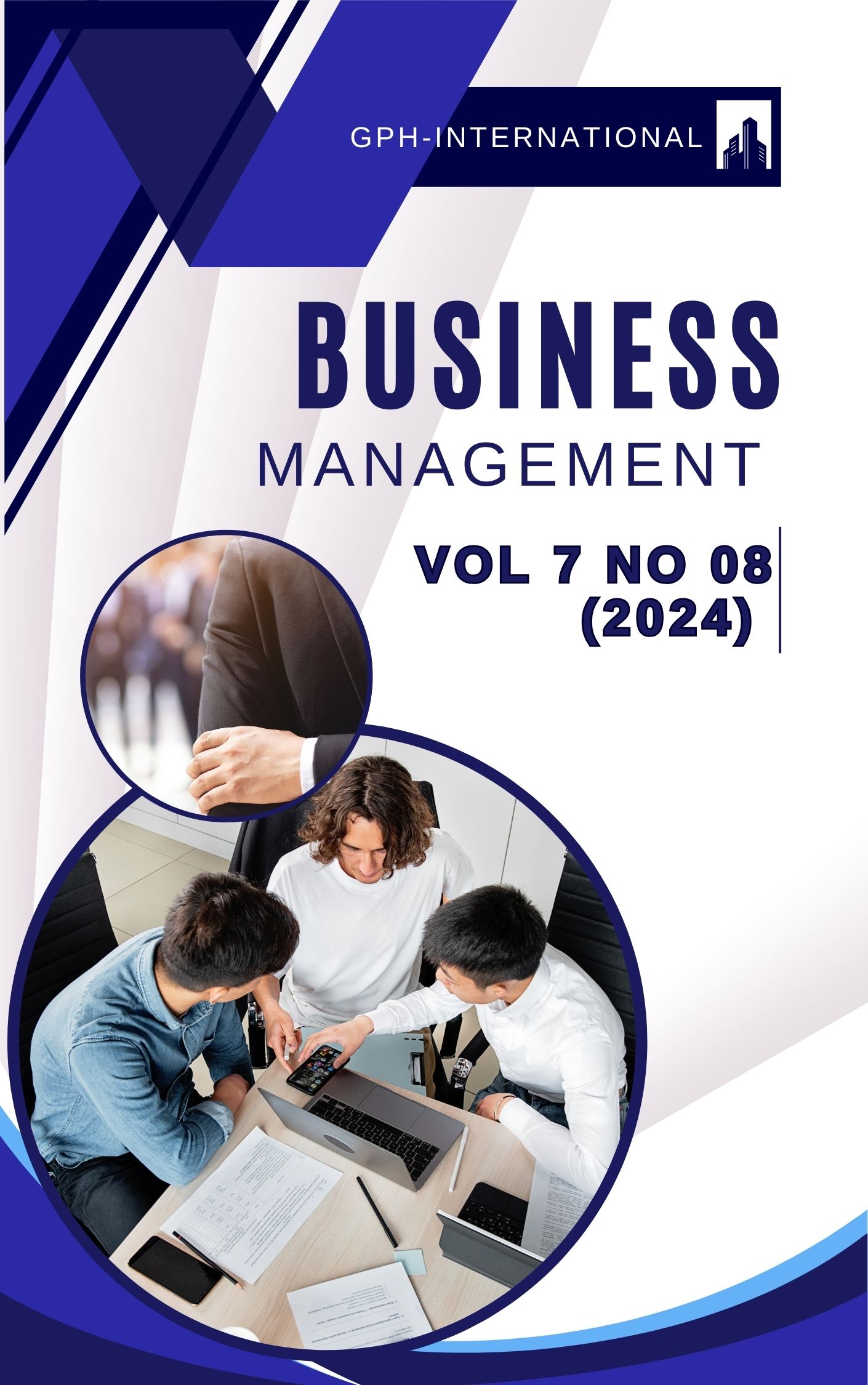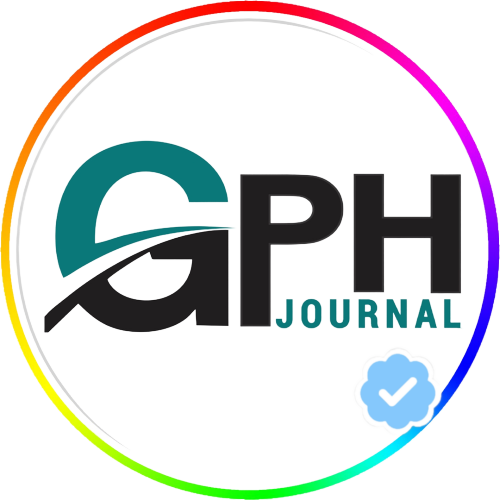Talent Retention and Competitive Advantage in Manufacturing Firms in South-South, Nigeria
Abstract
This study examined the correlation between talent retention and competitive advantage in manufacturing firms in South-South, Nigeria. Three hypotheses were formulated and tested using a convenience sampling method, with a total of 132 managers, supervisors, operational managers, heads of department of 57 manufacturing firms across the six states in South-South region of Nigeria participating. Out of the 132 distributed questionnaires, 120 were retrieved and analysed using the Pearson Moment Correlation Coefficient. The analysis revealed a positive and significant relationship between talent retention and the measures of competitive advantagein manufacturing firms in South-South, Nigeria. Based on these findings, the study concluded that talent retentionimproves competitive advantage.The study however recommended that manufacturing firms should; Implement comprehensive talent retention programs that focus on creating a positive work environment, providing career development opportunities, and offering competitive compensation packages.Focus on innovation and continuous improvement of product quality.Focus on improving operational efficiency and cost management practices.
Downloads
References
AbuAliqah, K. M. (2020). Product differentiation strategy: Implementing and sustaining competitive advantage. Journal of Business Strategy, 41(3), 25-39.
Agustia, D., Muhammad, N. P. A., &Permatasari, Y. (2020). Earnings management, business strategy, and bankruptcy risk: evidence from Indonesia. Heliyon, 6(2).
Al-Haraisa, Y. E., Al-Ma'aitah, N., Al-Tarawneh, K., & Abuzaid, A. (2021). Talent management practices and competitive advantage: Evidence from the Jordanian Insurance Sector. International Journal of Service Science, Management, Engineering, and Technology (IJSSMET), 12(5), 102-115.
Allen, D. G., Hancock, J. I., Vardaman, J. M., & McKee, D. N. (2021). What do we really know about employee turnover? Journal of Applied Psychology, 106(3), 331-355.
Almulhim, A. F. (2020). Linking knowledge sharing to innovative work behaviour: The role of psychological empowerment. The Journal of Asian Finance, Economics and Business, 7(9), 549-560.
Barney, J. (1991). Firm resources and sustained competitive advantage. Journal of Management, 17(1), 99-120.
Barney, J. B., & Hesterly, W. S. (2015). Strategic Management and Competitive Advantage: Concepts and Cases. Pearson.
Bel, R. (2018). A property rights theory of competitive advantage. Strategic Management Journal, 39(6), 1678-1703.
Bitar, J., & Hafsi, T. (2007). Strategizing through the capability lens: Sources and outcomes of integration. Management Decision, 45(3), 403-419.
Carlucci, D., Marr, B., &Schiuma, G. (2004). The knowledge value chain - how intellectual capital impacts business performance. International Journal of Technology Management, 27(6/7), 575-90.
Cavusgil, S. T., Ghauri, P. N., &Akcal, A. A. (2013). Doing business in emerging markets. SAGE Publications.
Chenhall, R. H., & Langfield-Smith, K. (2018). The relationship between strategic priorities, management techniques and management accounting: An empirical investigation using a systems approach. Accounting, Organizations and Society, 23(3), 243-264.
Christopher, M. (2011). Logistics and supply chain management (4th ed.). Pearson Education.
Collings, D. G., Mellahi, K., & Cascio, W. F. (2018). Global talent management and performance in multinational enterprises: A multilevel perspective. Journal of Management, 44(2), 540-566.
Correia, R. J., Dias, J. G., & Teixeira, M. S. (2020). Dynamic capabilities and competitive advantages as mediator variables between market orientation and business performance. Journal of Strategy and Management, 14(2), 187-206.
Ekweozor, C.U. &Obara, C.E. (2020). Worker competence development and organisational responsiveness of selected deposit money banks in Rivers State, Nigeria.International Journal of Innovative Social Sciences & Humanities Research, 8(1), 12-19.
Etemad, H. (2015). The promise of a potential theoretical framework in international entrepreneurship: An entrepreneurial orientation-performance relation in internationalized context.Journal of International Entrepreneurship, 13, 89-95.
Farhikhteh, S., Kazemi, A., Shahin, A., & Shafiee, M. M. (2020). How competitiveness factors propel SMEs to achieve competitive advantage? Competitiveness Review: An International Business Journal, 30(3), 315-338.
Friesenbichler, K., &Reinstaller, A. (2022). Do firms facing competitors from emerging markets behave differently? Evidence from Austrian manufacturing firms. European Business Review, 34(2), 153-170.
Gallardo-Gallardo, E., Thunnissen, M., & Scullion, H. (2020). Talent management: context matters. The International Journal of Human Resource Management, 31(4), 457–473.
George, B. A. (2015). Retaining talent in challenging environments. Journal of Organizational Behavior, 36(4), 462-489.
Kashyap, V., & Rangnekar, S. (2022). Talent retention strategies and organizational performance: A review of literature. International Journal of Management Reviews, 24(1), 1-18.
Lawson, B., & Samson, D. (2001). Developing innovation capability in organisations: A dynamic capabilities approach. International Journal of Innovation Management, 5(3), 377-400.
McDonnell, A., &Wiblen, S. (2020). Talent management: A research overview (State of the art in business research) (1st ed.). Routledge.
Mellahi, K., & Collings, D. G. (2010). The barriers to effective global talent management: The example of corporate élites in MNEs. Journal of World Business, 45(2), 143-149.
Mendy, J. (2018). Contextualising talent management and expatriate human resource management in the West African region: Issues and challenges. Critical Perspectives on International Business, 14(2/3), 255-278.
Mensah, J. K. (2015). A “coalesced framework” of talent management and employee performance. International Journal of Productivity and Performance Management, 64(4), 544-566.
Moh, Q. A. & Ahmad N. N. (2021). Gaining sustainable competitive advantage through talent management practices: evidence from selected higher educational institutions in Kabul, Afghanistan. International Journal of Marketing and Human Resource Management, 12(2), 42–52.
Morgan, N. A., Kaleka, A., &Katsikeas, C. S. (2019). Antecedents of export venture performance: A theoretical model and empirical assessment. Journal of Marketing, 68(1), 90-108.
Newbert, S. L. (2008). Value, rareness, competitive advantage, and performance: A conceptual‐level empirical investigation of the resource‐based view of the firm. Strategic Management Journal, 29(7), 745-768.
Obiekwe, N. (2018). Talent Management Practices and Employee Engagement in Manufacturing Firms in Nigeria. International Journal of Human Resource Studies, 8(4), 198-210.
Ott, D. L., Tolentino, J. L., &Michailova, S. (2018). Effective talent retention approaches. Human Resource Management International Digest. https://doi:10.1108/hrmid-07-2018-0152
Pehrsson, A. (2014). Firms' customer responsiveness and performance: The moderating roles of dyadic competition and firm's age, Journal of Business and Industrial Marketing, 29(1), 34 -44.
Porter, M. E. (1985). Competitive advantage: Creating and sustaining superior performance. Free Press.
Porter, M. E. (1996). What is strategy? Harvard Business Review, 74(6), 61-78.
Porter, M. E. (2008). Competitive advantage: Creating and sustaining superior performance. Free Press.
Sanchez-Henriquez, F., & Pavez, I. (2021). The effect of open innovation on eco-innovation performance: The role of market knowledge sources. Sustainability, 13(7), 3890.
Smith, A. (2016). Quality-driven differentiation strategy in modern industries. Journal of Business and Industrial Marketing, 31(8), 1045-1057.
Teece, D. J., Peteraf, M., & Leih, S. (2016). Dynamic capabilities and organizational agility: Risk, uncertainty, and strategy in the innovation economy. California Management Review, 58(4), 13-35.
Turner, P., & Endres, G. (2023). Strategic management: Concepts and cases. McGraw-Hill Education.
Venkatesh, A.N.(2014). Global talent management for sustainable competitive advantage.International Journal of Business and Administration Research Review, 1(6), 31-46.
Wang, Y., Zhou, H., & Li, J. (2020). Competitive advantage in the digital age: How firms benefit from data analytics. Journal of Business Research, 123, 255-266.
Woodruff, R. B. (2007). Marketing in the contemporary enterprise. McGraw-Hill Education.
Zainee, I. A., & Puteh, F. (2020). Corporate social responsibility impact on talent retention among Generation Y. Revista De Gestão, 27(4), 369–392.
Zhang, A., & Zhang, W. (2022). Network orientation, organisational improvisation and innovation: An empirical examination. Systems Research and Behavioral Science, 39(3), 668-678.
Zhou, K. Z., Yim, C. K., &Tse, D. K. (2005). The effects of strategic orientations on technology- and market-based breakthrough innovations. Journal of Marketing, 69(2), 42-60.
Copyright (c) 2024 GPH-International Journal of Business Management

This work is licensed under a Creative Commons Attribution-NonCommercial-NoDerivatives 4.0 International License.
The authors and co-authors warrant that the article is their original work, does not infringe any copyright, and has not been published elsewhere. By submitting the article to GPH-International Journal of Business Management, the authors agree that the journal has the right to retract or remove the article in case of proven ethical misconduct.




























